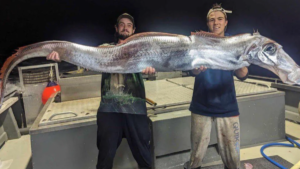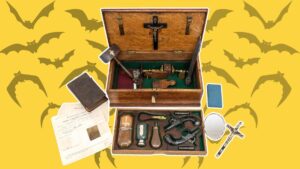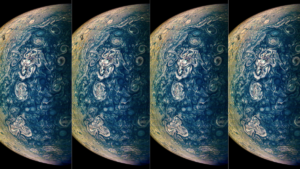Photos shared to social media authentically show the real skull of biblical figure Mary Magdalene inside a gold reliquary.
The photographs show an authentic medieval reliquary containing a skull that the Vatican has recognized as an authentic relic of Mary Magdalene since the Middle Ages. However, challenges to the identification of the bones have popped up for centuries, and modern scientific analyses have been inconclusive.
In early November 2024, a Reddit user posted a screenshot (archived) of two images purportedly showing a skull inside a head-shaped gold reliquary. The text in the screengrab identified the remains as “The skull of Mary Magdalene in St Maximin Basilica in France.”
The author of the post, which had amassed more than 48,000 upvotes as of this writing, said: “This is the hardest s*** I’ve ever seen.”
This is the hardest s*** ive ever seen
byu/Bug_Impressive ininterestingasfuck
Similar images of the relic have circulated for years on X (archived), Facebook (archived), Instagram (archived), and in a number of popular posts on Reddit. One February 2020 post (archived) garnered around 53,000 upvotes and 2,700 comments. Another post (archived) from July 2022 received around 71,000 upvotes and 2,900 comments.
The images shared in these social media posts were genuine photographs of a relic that was first identified as belonging to the biblical figure Mary Magdalene in 1279, when her skeleton was allegedly discovered in a marble tomb in Saint-Maximin-la-Sainte-Baume (often shortened to Saint-Maximin), a town near Aix-en-Provence in southern France. Officially recognized by Pope Boniface VIII in 1295, the relic has been venerated at Saint-Maximin’s Basilique Sainte-Marie-Madeleine for centuries.
Despite the relic’s long history of recognition by the Catholic Church, doubts about the bones’ identification have popped up since at least the 17th century, and various modern attempts to study the bones scientifically have failed to result in any definitive proof that the skull and other bones on display at Saint-Maximin genuinely belonged to the historical Mary Magdalene.
As a result, we have rated this claim as unproven, meaning we were unable to arrive at a true or false determination based on the available evidence.
To verify that the photos authentically show the relic identified as Mary Magdalene’s skull, a reverse image search was carried out on the photo from the r/Damnthatsinteresting post. Although it was not possible to locate the image’s original source, it has circulated online since at least 2013, when it appeared in a popular Tumblr post.
Additional confirmation that the relic is indeed the one on display in Saint-Maximin, which allegedly contains the skull of Mary Magdalene, came from a virtual tour of the Basilique Sainte-Marie-Madeleine, which is promoted on the official website of the town of Saint-Maximin, as well as from multiple photos of the relic posted to the basilica’s TripAdvisor page by independent visitors.
The question of whether the skull authentically belonged to the biblical figure known as Mary Magdalene is less straightforward.
As the religious scholar Philip Almond explains in his 2023 book “Mary Magdalene: A Cultural History,” the skull was discovered in 1279 by a nephew of the French King Louis IX named Charles of Salerno, who was motivated by a medieval French legend in which Mary Magdalene and other biblical figures fled the Holy Land after Jesus’ death and settled in Provence. According to tradition, Charles found an ancient tomb in Saint-Maximin containing a mostly-complete skeleton accompanied by a wooden tablet identifying the remains as those of Mary Magdalene.
One wrinkle in the story of the relic’s discovery is the fact that by 1279 multiple churches and monasteries had already claimed to possess part or all of Mary Magdalene’s body. There also existed a strong textual tradition claiming Mary Magdalene was buried in Ephesus, in modern Turkey.
The Saint-Maximin claim ended up winning out, and in the 1290s Pope Boniface VIII granted several bulls recognizing their Mary Magdalene relics as authentic and authorizing the construction of a basilica to hold them. The Catholic Church has officially recognized the relics as genuine ever since.
Despite this official stamp of approval, a number of figures both in and outside the church have questioned the authenticity of the relics. In the 1600s, the historian Jean de Launoy was accused of heresy for writing a book questioning the identification of the Saint-Maximin Mary Magdalene and other saintly relics. His book was banned, and the Parlement of Aix ordered that any bookstore found to be selling it would have to pay a fine to the Basilique Sainte-Marie-Madeleine. Another notable critic was the 20th-century French bishop and historian Victor Saxer, who argued against the credibility of the medieval legends about Mary Magdalene spending the end of her life in Provence.
Since the 1970s, a handful of scientific studies have attempted to shed light on the origins of the remains now on display in Saint-Maximin. In 1974, a team of French anthropologists determined that the bones were consistent with those of a woman who lived in the first century. More recently, a 2016 study examined mitochondrial DNA taken from hairs allegedly discovered alongside the skeleton and found genetic markers consistent with Jewish ethnicity. The following year, another team of scientists analyzed the skull in an attempt to recreate how its face would have looked in life.
In all three cases, the scientists were clear that their findings in no way served to definitively identify the remains as having authentically belonged to the biblical figure. As one of the scientists involved in the 2017 facial reconstruction project told National Geographic (archived) in an interview: “We are absolutely not sure that this is the true skull of Mary Magdalene.”
Ultimately, the photos shared on social media do show an authentic medieval reliquary containing a skull that the Vatican has recognized as an authentic relic of Mary Magdalene since the Middle Ages. However, challenges to the identification of the bones have popped up for centuries, and modern scientific analyses have been inconclusive. As a result, we have given this claim a rating of unproven.








